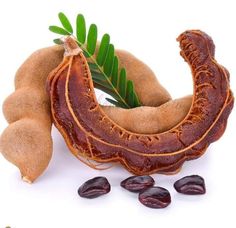Description
imli | imlee | imly
Key Features:
- High-Quality Tamarind: Hand-selected for premium taste and texture.
- Unique Sweet-Tangy Flavor: Adds a deliciously tart note to a wide variety of dishes.
- Versatile Ingredient: Perfect for curries, chutneys, sauces, marinades, and beverages.
- Nutrient-Rich: A natural source of antioxidants, vitamins, and minerals, including vitamin C and potassium.
- No Added Preservatives: Naturally processed with no artificial additives.
Storage Instructions:
Store tamarind in a cool, dry place, away from direct sunlight. To preserve freshness longer, refrigerate tamarind in an airtight container for up to 6 months.
Usage Suggestions:
- Cooking: Use tamarind pulp to add depth to curries, soups, and sauces.
- Beverages: Create tamarind juice or add it to cocktails for a refreshing sour note.
- Snacking: Enjoy tamarind straight from the pod for a tangy treat.
- Chutneys and Sauces: Ideal for making tangy chutneys, marinades, or dipping sauces.
FAQs
1. What is tamarind?
Tamarind is a tropical fruit known for its unique sweet-tangy flavor. It grows in a pod and is commonly used in cooking to add a sour note to dishes, sauces, and beverages.
2. How should I store tamarind?
Store tamarind in a cool, dry place away from direct sunlight. For extended freshness, keep it in an airtight container in the refrigerator. Properly stored tamarind can last up to 6 months.
3. How do I prepare tamarind for cooking?
To prepare tamarind, remove the outer shell and extract the pulp from the pod. Soak the pulp in warm water to soften it, then strain to remove fibers and seeds if needed. The resulting liquid or paste can be used in your recipes.
4. How do I know if tamarind is fresh?
Fresh tamarind should have a firm texture and a strong, tangy aroma. Avoid tamarind that appears dry, moldy, or has an off smell, as these may indicate spoilage.
5. Can I use tamarind paste instead of tamarind pods?
Yes, tamarind paste is a convenient alternative to tamarind pods. Use it in the same way you would use tamarind pulp or concentrate, adjusting the quantity to taste.
6. What are the health benefits of tamarind?
Tamarind is rich in antioxidants, vitamins (such as vitamin C and B vitamins), and minerals (such as potassium and magnesium). It may aid digestion, support cardiovascular health, and help maintain healthy skin.
7. Can tamarind be used in both sweet and savory dishes?
Absolutely! Tamarind is versatile and can be used to add a tangy flavor to both sweet and savory dishes. It is commonly used in curries, sauces, chutneys, marinades, and even in some desserts and beverages.
8. How long does tamarind last once opened?
Once opened, tamarind should be stored in an airtight container and kept in the refrigerator. It can last up to 6 months if stored properly.
9. Is tamarind suitable for vegetarians and vegans?
Yes, tamarind is suitable for both vegetarians and vegans. It is a plant-based ingredient with no animal products or by-products.
10. Can tamarind be used in beverages?
Yes, tamarind is excellent in beverages. It can be used to make refreshing tamarind juice, added to cocktails, or used in other drinks for a unique sour twist.








Reviews
There are no reviews yet.